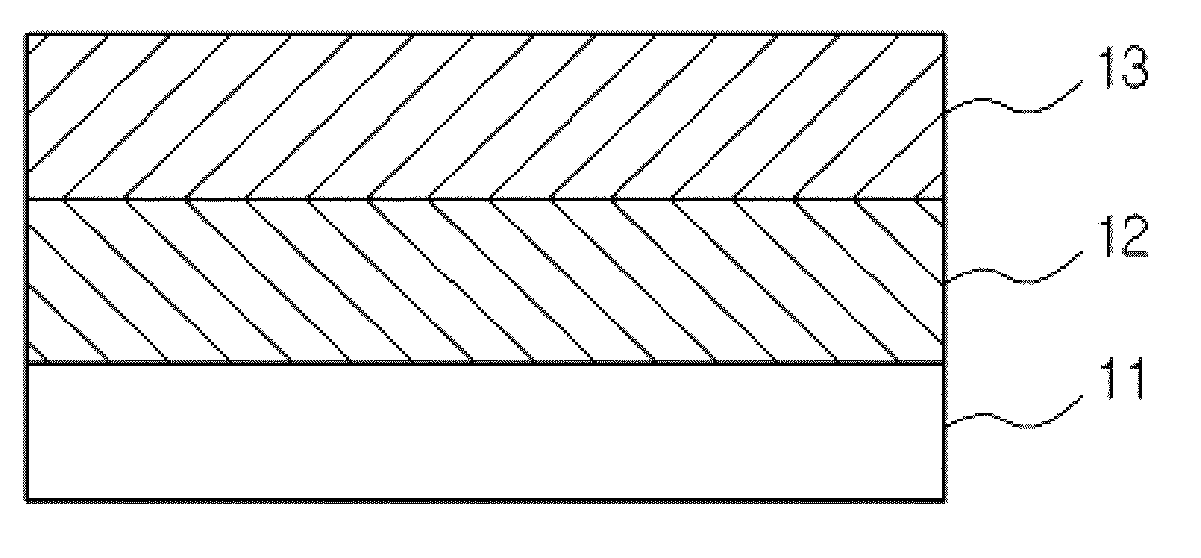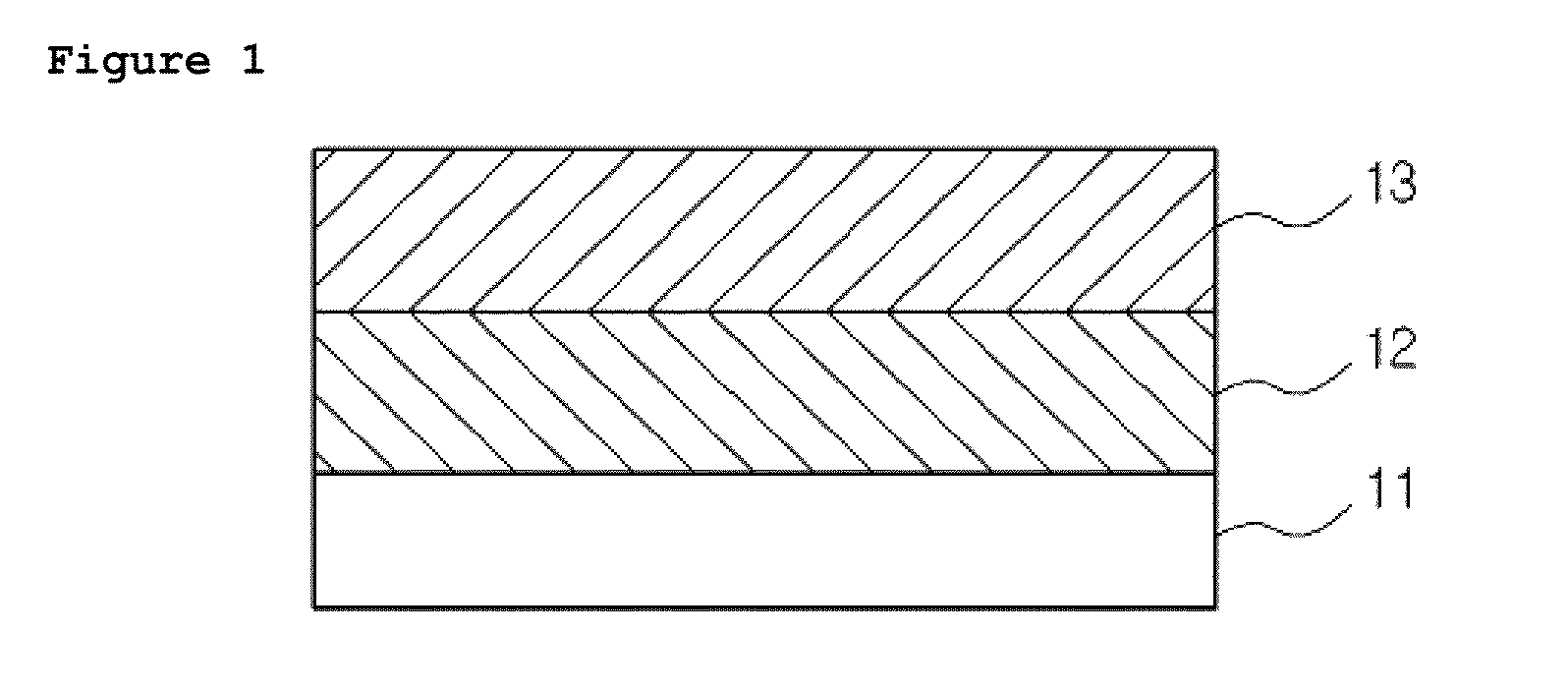Manufacturing methods for metal clad laminates
a manufacturing method and metal clad technology, applied in the direction of superimposed coating process, transportation and packaging, coatings, etc., can solve the problems of reducing the adhesive power of continuous process, reducing the adhesive power of whole substrate, and bending and curled up whole substrates, etc., to achieve great hygroscopic
- Summary
- Abstract
- Description
- Claims
- Application Information
AI Technical Summary
Benefits of technology
Problems solved by technology
Method used
Image
Examples
example 1
[0067]2-Ethylhexylammonium 2-ethylhexylcarbamate (1.53 kg, 5.08 mol) and n-butylammonium n-butylcarbamate (1.33 kg, 6.94 mol) were added to a reactor equipped with a stirrer and isopropanol (0.95 kg) was added to dissolve them. Silver oxide (1 kg, 4.31 mol) was then added to the reactor and the reaction was carried out at room temperature. The reaction initially occurred in black slurry of said reaction solution. However, according to the formation of a complex over time, it was observed that color of the reaction solution became lighter and eventually turned transparent. After 2 hours of the reaction, a colorless and transparent solution was obtained. To said solution, 1-amino-2-propanol (0.125 kg) and VAP MP 200 (0.12 kg; manufactured by Chokwang Paint, Ltd.), which is an acrylic resin, are added as a stabilizer and a binder resin, respectively. After stirring, the solution was filtered using a membrane filter having a pore size of 0.45 micron to give a silver coating composition....
example 2
[0068]The silver coated film obtained in Example 1 was placed in a bath in which nickel sulfate (150 g / L), nickel chloride (40 g / L) and boric acid (30 g / L) are comprised at 30° C. Having nickel as an anode and a silver-coated side of the film as a cathode, an electric current (25 A / m2) was applied while maintaining the travel speed of the film at 8 m / min to prepare a metal clad laminate having the copper foil layer with 5 micron thickness. Initial peel strength of the metal clad laminate as prepared as above is given in the following Table 1.
example 3
[0069]A PET film was coated with the silver coating composition obtained in the above Example 1 using a roll-to-roll coating machine. The film was then subjected to a heat treatment to give a silver film having a conductivity of 0.3 Ω / ° C. and a thickness of 0.2 micron. Thus-obtained conductive PET film was placed in a bath in which copper sulfate (125 g / L) is comprised at 35° C. Having copper as an anode and a silver-coated side of the film as a cathode, an electric current (30 A / m2) was applied while maintaining the travel speed of the film at 10 m / min to prepare a metal clad laminate having the copper foil layer with 10 micron thickness. Initial peel strength of the resulting metal clad laminate is given in the following Table 1. The metal clad laminate as prepared as above was subjected to a photolithographic process to form a mesh pattern having line width of 10 micron and line interval of 300 micron.
PUM
| Property | Measurement | Unit |
|---|---|---|
| thickness | aaaaa | aaaaa |
| thickness | aaaaa | aaaaa |
| glass transition temperature | aaaaa | aaaaa |
Abstract
Description
Claims
Application Information
 Login to View More
Login to View More - R&D
- Intellectual Property
- Life Sciences
- Materials
- Tech Scout
- Unparalleled Data Quality
- Higher Quality Content
- 60% Fewer Hallucinations
Browse by: Latest US Patents, China's latest patents, Technical Efficacy Thesaurus, Application Domain, Technology Topic, Popular Technical Reports.
© 2025 PatSnap. All rights reserved.Legal|Privacy policy|Modern Slavery Act Transparency Statement|Sitemap|About US| Contact US: help@patsnap.com



